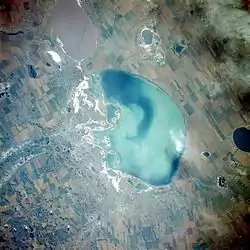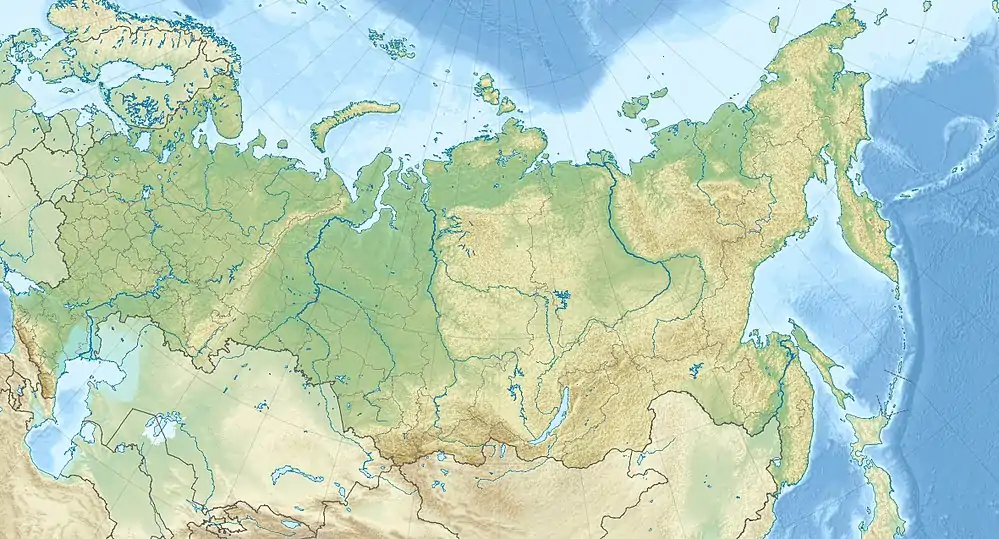Lake Kulundinskoye
Lake Kulundinskoye (Russian: Кулундинское озеро) (located at 53°0′N 79°30′E) is located on the southern edge of the much larger West Siberian Plain of south-central Russia. This lake, along with many other lakes in the region, exhibits a wide array of colors. The variations in color suggest that each lake is at a different stage of eutrophication. The lake immediately south of Lake Kulundinskoye is mauve-colored, contrasting with the oval, dark blue lake along the northwest edge of the photograph. Two deltas can be observed along the eastern side of Lake Kulundinskoye. The white areas are probably salty minerals that were deposited on the surface as water evaporated, since there are no outlets, rendering the water hypersaline, with a mineralization of 111.5 g/l, suitable for a native population of brine shrimp (Artemia sp.).[1] A well-established shelter belt system (a series of three parallel lines adjoining end to end) runs generally north-south along the eastern side of Lake Kulundinskoye to form a manmade barrier to help protect against wind erosion. The cultivated field patterns are large and basically rectangular in shape.
| Kulundinskoye Lake | |
|---|---|
 Lake Kulundinskoye from space (August 1989) | |
 Kulundinskoye Lake | |
| Location | West Siberian Plain |
| Coordinates | 53°0′N 79°30′E |
| Basin countries | Russia |
References
- National Aeronautics and Space Administration
- Biochemichal Composition of Artemia Cysts Used as Food for Juvenile Fish from Different Hypersaline Lakes of the Altai Territory.